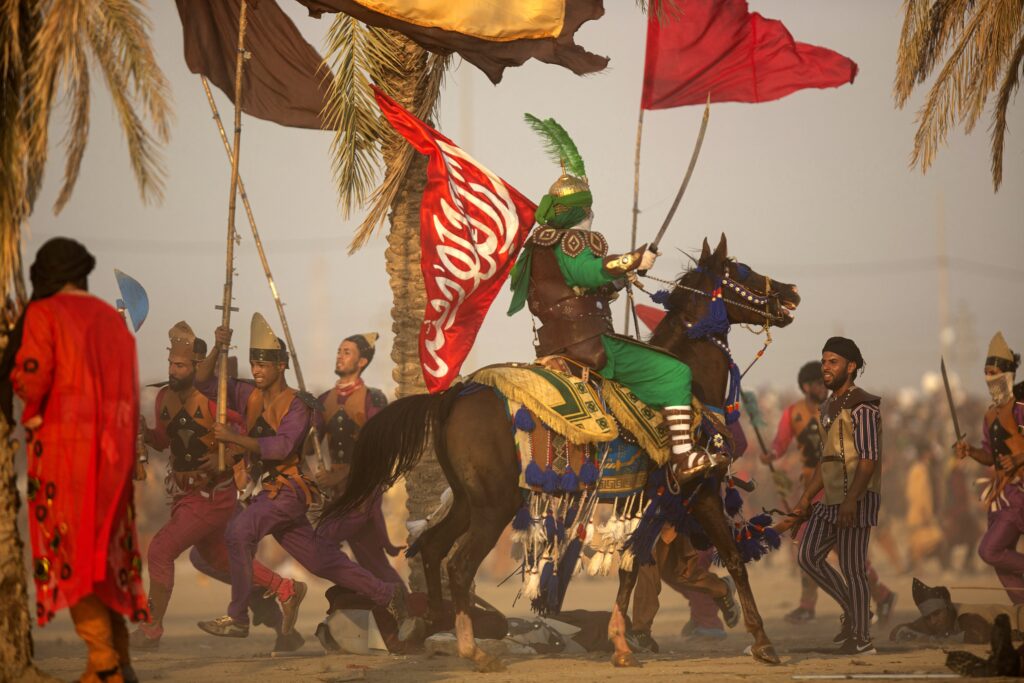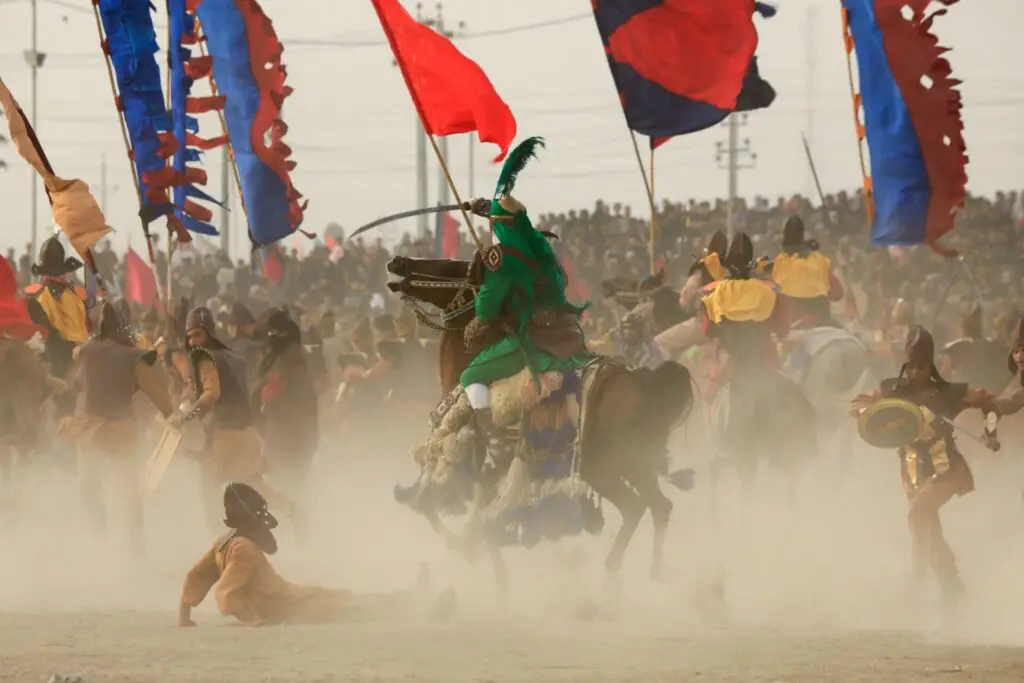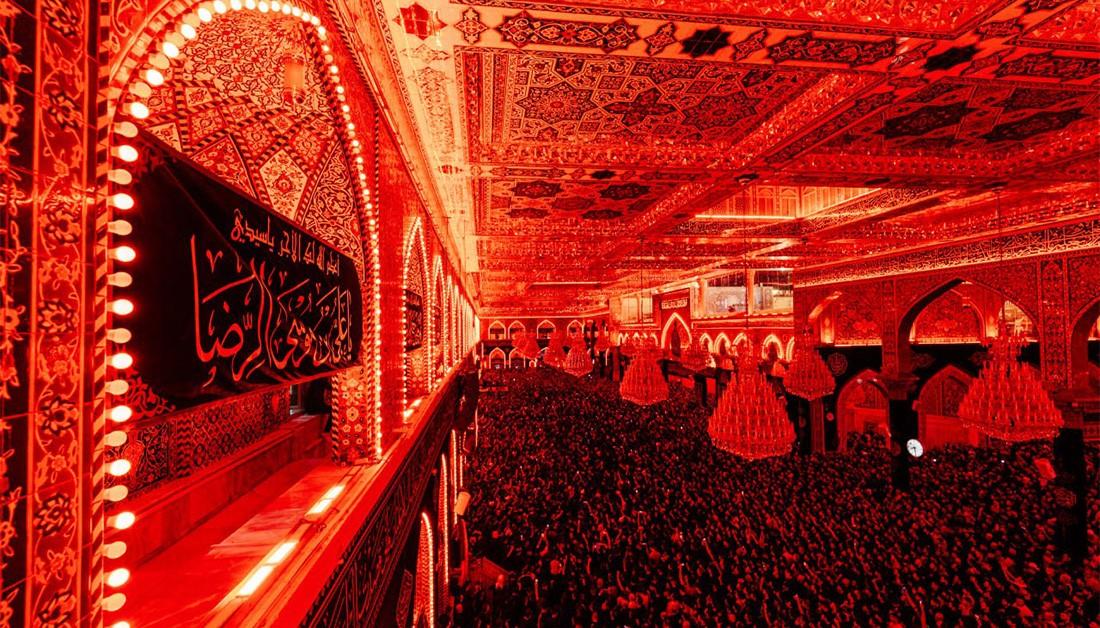The Shiite sect commemorates the memory of Ashura on the first of Muharram through grand ceremonies that include replacing the colorful banners on the domes of the shrines of Imam Hussein and Imam Abbas with black banners, and changing the lighting colors from green to red. Millions of Iraqis from various provinces head to Karbala for the ceremonies, where the black flags emerge to block the light, reminding us of the darkness of Karbala that enveloped the hearts of the free. At that moment, Karbala is not just a city; it is a heart pulsating with revolution and struggle, a symbol defying time and oppression.
The importance of Karbala in Iraqi History
Karbala is not merely a city on Iraq’s map; it is the qibla of revolutionaries, a refuge for those dreaming of justice and freedom. It is the memory that tells the tale of Imam Hussein’s steadfastness, the father of the free, who became a symbol of the revolution against tyranny and oppression. Karbala is a beacon lighting the path for the oppressed, constantly reminding them that justice is the goal and truth is the weapon.

Ceremonies of the first ten days of Muharram
The first ten days of Muharram begin by dedicating each day to a revolutionary figure who participated in the Battle of Karbala, where their stories are told through poems that narrate the events of the battle with a tone filled with emotion. People gather to share in the sorrow and remembrance, recounting the stories of Imam Hussein, his children, and his companions who sacrificed everything for human dignity and to protect the principles of Islam. Faces shimmer with tears, and hearts breathe the heavy air of sorrow. Throughout Ashura, which continues for two months, food is prepared to be distributed to the neighborhood and markets for free, and the streets are filled with the aromas of food and drink offered in honor of the pure souls who fell in the Battle of al-Taff.
Commemorating the tenth of Muharram
On the night of the tenth of Muharram, people stay up to remember the farewell of Imam Hussein’s family and loved ones as they prepare for death for the sake of justice, God’s word, and the true principles of Islam. Food is prepared to be distributed on the morning of the tenth day, which begins with grand ceremonies. People head to Karbala to revive the ceremonies, and in every city, a historical play is performed, reenacting the Battle of al-Taff in which Imam Hussein was martyred.
The Tuwayrij run
After noon prayers, the Tuwayrij Run ceremony is held, where people run from the location of the army that fought Imam Hussein towards the shrine of Imam Hussein and his brother Abbas, raising slogans of loyalty to Imam Hussein’s revolutionary approach and standing up to tyrants. The attack of the army that assaulted the women and children accompanying Imam Hussein is symbolically mirrored, expressing solidarity with the victims and continuing the revolution against oppression.
Why do we commemorate Ashura?
We commemorate Ashura because it embodies an eternal struggle between pure Islam and fake Islam. Imam Hussein, through his steadfastness in Karbala, represents the pinnacle of Islam’s principles of freedom, social justice, and high human values. In contrast, fake Islam reveals its ugly face by attempting to kill the grandson of Prophet Muhammad (PBUH), showing the extent of manipulation of the pure religion’s message for political and malicious purposes.
In Karbala, Imam Hussein stood with his sisters, children, and companions, who were few but steadfast in truth. Facing a massive army, they presented the most beautiful images of heroism and sacrifice, defending true Islam, which strives to achieve justice and dignity. This steadfastness was a manifestation of Imam Hussein’s and his followers’ rejection of every attempt to distort the pristine message of Islam.

Prophet Muhammad (PBUH) came with a revolutionary message, fighting against all forms of injustice and corruption. He called for the abolition of unjust traditions such as burying girls alive, ensured women’s rights to inheritance, and promoted financial equality among the members of the Islamic nation. He established principles of freedom and freedom of expression, values many have sought to destroy over the ages.
God Almighty, in all religions, equates all humans, but humans strive to change His words according to their whims. Prophet Muhammad (PBUH) brought the message of justice and equality to the Arabian Peninsula, and Imam Hussein continued this message in Karbala, sacrificing himself and his loved ones to uphold Islam’s noble values.
Today, history continues to repeat itself. Groups appear claiming to belong to Islam while practicing injustice and tyranny. Yet, Imam Hussein remains a symbol of justice and true Islam, a beacon guiding revolutionaries and the honorable in facing tyrants and oppressors.
Commemorating Ashura is not just a celebration; it is a reminder of the necessity of steadfastness on noble values and the struggle against oppression. It is a call to the free in every time and place to hold on to principles of justice, continuing the revolution against every attempt to manipulate Islam’s message, inspired by Imam Hussein’s sacrific.

Nabaa Al-Hassany is a young Iraqi writer and columnist for Younis Project. She writes about Iraqi culture.








